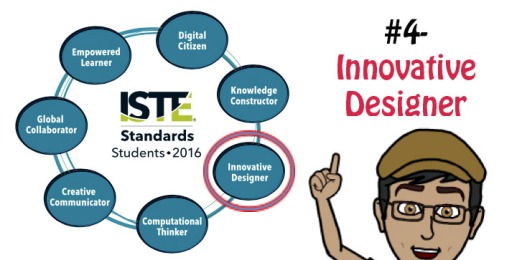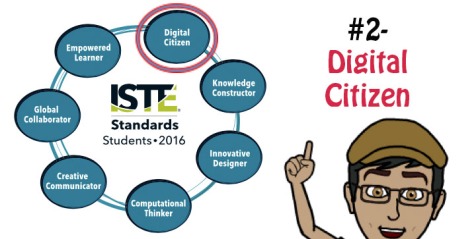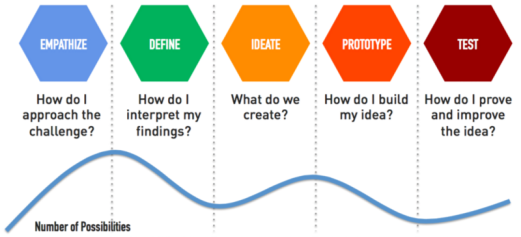In the first part of this blog series, I discussed general information about starting your own individualized learning project for your students. I included a rationale, suggested some first steps, and shared a presentation you could adapt to your needs and share with colleagues or parents. It included everything from what Genius Hour is, to a suggested timeline, research and design frameworks, to inspirational videos and more.
In this second part of the series, I will share the details, or the “behind the scenes” of designing your own Genius hour experience for your students.
Finding the Time:
At my school, we dedicate one hour four times a week to something we call "I/E" (Intervention/ Extension). This is a time when students with heavy learning needs are pulled out of the classroom and are given additional instruction in the areas they need ("Intervention"), while those who stay behind get challenged in different areas at a higher level ("Extension"). The only rule we had to follow was that we were not to teach them any new curriculum-related material (so that struggling students don't miss it). After spending months differentiating instruction to small groups based on student needs, I felt like it was not a satisfying experience- neither for me nor for my students. I/E time was a perfect place to experiment with my Passion Project idea.Finding the time is an important first step because the way you structure your project time will depend on how often and how long you can, or are willing to, allow your students to work on their projects. For me, about one hour, 4 days a week has been perfect.
 |
| 45 minutes a day, four times per week, is one way to organize the schedule |
Creating a Timeline:
Depending on the time you have each day/week for this work, as well as the number of weeks you can afford running it, your project timeline would look differently. I recommend allotting one week on both ends for introduction and presentations/reflections, sufficient time for research, and ample time for product ideation, creation, feedback, and improvement:- Week 1: Introduction: The process/product/presentation, and the supporting documents.
- Week 2: Choose a project and get it approved
- Weeks 3-4: Intense research time
- Week 5: Finish research and start prototyping (product)
- Week 6-8: Work on products (including giving and receiving feedback) and the Process Presentation
- Week 9: Work on presentations, present and reflect
The Project:
Depending on students' ages, abilities, and experience with self-directed learning, as well as your experience, and material- and human- resources, you will need to make a decision about what to expect of students, and which types of projects would be “acceptable”. This is important because expecting students (at any age) who have never learned how to take notes on their own to be engaged in research for extended periods of time might be a recipe for failure; expecting students to learn how to compose music on the trombone without actually having one is impossible; and creating a stop-motion animation without having cameras simply cannot happen. Think carefully about all these elements before you approve any project idea!Another important aspect of the types of inquiries and projects students engage in and create, has to do with the idea of Empathy, and with training students to think beyond themselves. I found Don Wettrick's 'Rule of Thirds' to be an excellent way to explain to students which types of projects are acceptable. According to Don, in order for a project to be approved, there are three basic questions students must consider and answer positively to. If any of the questions are answered negatively, the project is not approved. As simple as that.
 |
| Don Wettrick's 'Rule of Thirds' |
Grouping:
If you are doing this project for the first time (for you or for a particular group), I would recommend you start with individual projects. Once students have gone through the process, and had the chance to explore their own passions and to research and create, and you gathered sufficient information about what they can and cannot do on their own, you may want to consider letting students work in pairs or trios, according to shared passions and interests.The Platform:
It is important to make it easy for students to find the information they need quickly. This saves valuable time. You can choose to host the information and handouts you will be sharing with students in different places and ways. I chose to go digital and to create one central location for students to find all the information they'll need- guidelines, inspirational videos, research notes documents, presentation examples, etc. The platform I chose was the new Google Sites, as it now allows for page/site template creation, which makes it easy to keep all documents in one place. |
| The Passion Project Website is hosted on (the new) Google Sites |
What to Include:
I chose to have all the information in one central location and share it with students. Deciding to share all the information at once was a conscious decision, as I wanted this to be my students' "central command"- a place where they know they must visit in order to find out what to do, how to do it, what comes up next, what they already did, etc. Here are some of the pages I decided to include in order to guide and scaffold student learning:- Understanding what Passion Project is: Before students start thinking about and working on their projects, they must show an understanding of what this project time is. They should be able to answer basic questions after a teacher's introduction, watching videos, and class discussions.
- Getting inspired and guided to find their passions and interests: To inspire students, I used different videos about where ideas come from, what is creativity, what projects other students have done, etc. I also created worksheets for them to brainstorm what they are passionate about, what they do in their free time, etc.
- Deciding on topics to inquire into and products to create: After brainstorming and sharing project ideas (it's very important to share!), students begin narrowing their topics to find what they would like to learn about and what they would like to create. Learning (research), creating (product), and sharing (presentations) were three requirements.
- Narrowing their topic to something quantitative and achievable: Once students have a pretty good idea of what they would like to learn and create, I make them take it home and work with their parents to focus their topics into one specific statement, such as "I would like to design my own t-shirt", "I want to learn more about Norse Myths", etc. Sharing with their parents is important because I want their parents to understand what this project is and to be a part of the support team, and because I want the students to take this step very seriously.
- Submitting a Proposal: Once I had discussions with each student about what they would like to learn about and what they would like to create, they are ready to submit a proposal. In their proposals, I ask them to tell me why they are passionate about the topic, what they already know, what questions they have, do a bit of research ("pre-search"), and propose what their product is going to be. Assuming students have a good project idea, when it is the first time they are doing it, I almost always make them revise their proposals, re-think different aspects of it, and come back with more passion and determination.
- Researching: This is an extremely important aspect of the project, and it needs to be taught very carefully based on students age, reading levels, prior experience with reading/note taking/synthesizing, and stamina (See "Choosing a Research Framework" below). (anything from asking questions about their topic to taking notes, synthesizing, etc.)
- Creating a product:
- Choosing a Design-Thinking process: An important ingredient of this project is students' creation of a product. In order for students to create a quality product, choose a Design-Thinking process. A DT process allows designers to create a high-quality product through a repeated process of ideation, creation, and iteration. If your students have never worked with a DT process before, make sure you spend some time explaining each step and emphasizing its value. Here are a few of the design-thinking processes I found schools to be using. Feel free to choose one that fits your needs, and play around with it!
- Remember and Consider: In students' Passion Project Proposals, they indicated what product they will create as a result of their learning. There are two important things you need to do here:
- Make sure you have the materials before they begin working on their products.
- Consider early prototyping (see above). What often happens is that students spend a lot of time on their research, give themselves very little time to work on a product. With little time to spare, they realize they don't have enough time to complete it. Creating their product early, getting feedback and revising it (sometimes again and again) to ensure it is high quality is very important, and sometimes results in an adjustment of the overall project. For example, I had a student who wanted to write a book about Norse Myths. She did a lot of research. At some point, I asked her to create a prototype chapter, so we see how it goes. She started writing the chapter, needed to do additional research, and two weeks have passed. We realized she won't be able to finish an entire book, so we adjusted her project to be a "published story about a Norse Myth". She finished and edited it, and met with her mentor, and received her illustrations from an older student I matched her with, just in time before presentations. Had she waited until she completely finished researching, she would have had no product at all...
- Creating a Process Presentation: An important requirement for this project is sharing it with the rest of the world. In order to do that, I ask students to choose their medium of presentation, but give them guidelines as to what they must include in their presentation:
- the project they chose;
- the reason they chose it;
- the questions they had;
- important things they found out; and,
- their product.
----------------------------------------------------
Thank you for taking the time to read through this long and detailed post. I hope you found is useful. As usual, if you have any further questions or would like to share ideas that work (or didn’t work…) for you, please reach out by commenting here or on twitter (@EduRonen). This is a learning community, and the idea of a “destination” is only an illusion!







